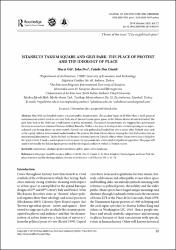Istanbul’s Taksim Square and Gezi Park: the Place of Protest and the Ideology of Place
Künye
GÜL, Murat, John DEE & Cahide Nur CÜNÜK. "Istanbul’s Taksim Square and Gezi Park: the Place of Protest and the Ideology of Place". Journal of Architecture and Urbanism, 38.1 (2014): 63-72.Özet
May 2013 saw Istanbul witness a massive public demonstration. The incident began on 28 May when a small group of
environmental activists tried to save Gezi Park, one of the most iconic green spaces in the Taksim district of central Istanbul. The
park dates back to the 1940s and is well-known as public promenade. The modest demonstration was triggered by a government
decision to reconstruct a former Ottoman Artillery Barracks. Within a few days, it developed into a violent uprising on an unprecedented
scale lasting almost an entire month. Crowds not only gathered in Istanbul but also in many other Turkish cities such
as the capital, Ankara. International media broadcast the protests live from Taksim Square turning the Gezi Park protest into an
international phenomenon. Today the Park has become a reference point in Turkish politics where almost every issue is linked to
the ‘spirit of Gezi’. It made a modest protest over an inner city promenade into a vivid symbol of political opposition. This paper will
analyse historically the Taksim Square project and the ideological conflicts it evoked in Turkish society.



















